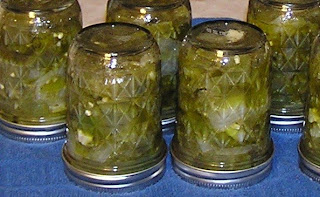After the holidays, many of us are left with ugly, seemingly useless, pillar candles.
DON'T THROW THEM AWAY!
An old iron and a few minutes will have them looking new again.
To get started, break off the brittle, blackened wick tips with your fingers. The thin edges of the candle tops can be cut away in advance with a knife if you like but it isn't really necessary. The melting process is a quick one.
The old-fashioned iron, (without steam vents) that I picked up at a thrift store for $1, is perfect for this quick task. On a medium setting, halfway between Silk and Wool, hold the iron with the pointed side down so the wax pours off the tip. Collect it in a heat-safe container like a Pyrex measuring cup. (If you use a regular, steam iron, hold it with the point facing up and let the wax pour off the heel of the iron so it does not get into the steam vents. Running the iron across a paper towel when finished will remove any wax film and your iron will be just fine.)
Melt the wax down until 1/4" of wick is revealed. I left the discolored wick tips but you can easily melt a little more wax away and trim the wicks to pristine white. And there you have it. The candles are shorter but certainly ready to be used again.
ADDITIONAL THRIFTY NOTE:
Stand used taper candles in an old candle jar and fill around them with the accumulated melted wax.























































